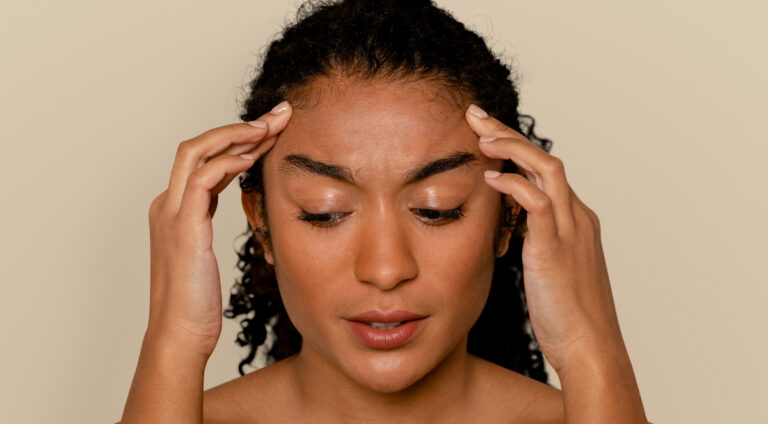Stress is a common condition that affects many people and is caused by various factors such as work, relationships, and financial issues. Stress can manifest itself in various physical symptoms, including as aches and pains in the body.
In today’s fast-paced and hectic world, it’s easy to overlook the signs of stress, including aches and pains. Many people brush off these symptoms as part of daily life, but they may indicate deeper issues. In this article, we will explore various aspects of aches and pains and have they relate to stress.
What Exactly Are Aches and Pains?
Aches and pains are physical sensations that indicate discomfort or injury in the body. Aches are typically described as dull, persistent pain that may be felt in a specific area of the body, such as the back or head. Pains, on the other hand, are usually more intense and acute and may be described as sharp or stabbing. They can occur in any body part, including the muscles, joints, and bones. They can range from minor discomfort to debilitating pain and interfere with daily activities and quality of life.
Causes of Aches and Pains
Aches and pains can be caused by a variety of factors, including the following:
Injury
Pains and aches can result from an injury, such as a sprain or strain caused by stretching or tearing ligaments and muscles. These injuries can be caused by sudden movements, falls, or contact sports. Overuse injuries occur when a muscle or joint is used repetitively and becomes fatigued, leading to pain and discomfort.
Inflammation
Inflammation is the body’s natural response to injury or infection. It causes blood vessels to dilate and more white blood cells to be sent to the affected area. This results in swelling, redness, and warmth. Inflammation can also cause aches and pains in the affected area, such as in the case of an infected tooth or a sprained ankle.
Disease
Certain diseases and medical conditions can cause aches and pains throughout the body. These conditions are caused by inflammation and degeneration of the joints, bones, or other tissues and can lead to stiffness, pain, and difficulty moving.
Poor Posture
Poor posture can cause pains and aches throughout the body. It can lead to muscle tension, which can cause headaches, neck and shoulder pain, and lower back pain. Poor posture can also cause spinal nerve compression, leading to pain in the back, neck, and legs.
Do Aches and Pains Reflect a Stressed Mind and Body?
Aches and pains can reflect a stressed mind and body. Stress can cause muscle tension and lead to pains and aches in the neck, shoulders, and back. Stress can also affect the immune system, making the body more susceptible to injury and infection. When the body is stressed, it produces cortisol, a hormone that can cause inflammation, which can lead to pains and aches. Stress also causes emotional discomfort, leading to tension headaches, jaw pain, and muscle cramps.
Can we help you?
Leave us your information and one of our coaches will contact you in 24H

Stress can also lead to poor posture and fatigue, adding to physical discomfort. And in some cases, stress can cause sleep disturbances, leading to muscle pain and fatigue. Additionally, stress can have a detrimental effect on physical and emotional well-being, and pains and aches signify that stress needs to be addressed.
How To Treat Aches and Pains
There are a number of different ways to treat aches and pains such as:
Rest and Ice
Rest and ice are effective in treating pains and aches, particularly in the early stages of an injury or flare-up. Resting allows the body to heal and recover, while ice helps to reduce inflammation and numb pain. Applying ice to the affected area for 15-20 minutes at a time, several times a day, can help to reduce pain, swelling, and inflammation.
Over-the-Counter Pain Medication
Medication, such as ibuprofen [1]and acetaminophen [2], can effectively treat pains and aches. These medications reduce inflammation and numbing pain and can be taken orally or applied topically. However, it’s important to follow the packaging instructions and not exceed the recommended dosage.
Physical Therapy
Physical therapy is a form of treatment that helps to reduce pain and improve mobility. A physical therapist will assess the affected area and create a personalized treatment plan that may include exercises, stretches, and other therapies to help reduce pain and improve mobility.
Addressing Underlying Causes
Some pains and aches may be caused by underlying conditions, such as arthritis, or osteoporosis. In these cases, addressing the underlying causes is important to effectively treat the pains and aches before conditions worsen. This may involve seeing a specialist, such as a rheumatologist or an orthopaedic surgeon, and following a treatment plan that addresses the underlying condition.
Changing Behaviours To Improve Aches and Pains
Making positive changes to your existing lifestyle can usually result in improvement to a physical condition, and aches and pains are no different and include improvements such as:
Changing Diet
Eating a diet high in processed foods, sugar, and saturated fats can lead to inflammation in the body, contributing to pains and aches. It is important to make a conscious effort to eat a healthy diet rich in fruits, vegetables, whole grains, and lean proteins.
Staying Hydrated
Dehydration can lead to increased inflammation and pain in the body. To minimize the number and impact of pains and aches, you should drink enough water throughout the day, which can help to reduce inflammation and improve overall health.

Taking Regular Breaks
Sitting or standing in one position for long periods can lead to stiffness and pain in the body. To overcome such effects, it’s ideal if you must take regular breaks by standing up and walking around or stretching.
Changing Exercise Types
Doing the same exercises repeatedly can lead to overuse injuries which then increases pain levels. For a better experience, it is vital to vary one’s exercise routine by working different muscle groups and reducing the risk of overuse injuries.
Top Tips to Reduce Aches and Pains
Here are some top tips which can reduce aches and pain in the body.
Stretching and Exercise
Stretching and exercise are important for reducing pains and aches by increasing flexibility and strength in the muscles and joints. This can be as simple as taking a walk, doing some yoga poses, or as rigorous as hitting the gym for a full-body workout. Keeping the body active and mobile can help to reduce stiffness and pain and improve overall health and wellness.
Maintaining Good Posture
Good posture is essential for reducing pains and aches in the back, neck, and shoulders, as well as headaches and fatigue. By paying attention to posture and making a conscious effort to sit and stand up straight, individuals can reduce these symptoms and improve overall comfort.
Using Massage and Relaxation Techniques
Massage and relaxation techniques reduce tension and stress in the body, which can lead to aches and pains. Regular massages, aromatherapy, or even self-massage techniques can be done at home to help reduce pain and inflammation.
Getting Good Quality Sleep and Rest
Getting enough sleep and rest is crucial for reducing pains and aches. Lack of sleep can lead to fatigue, irritability, and increased pain. One can reduce pain and inflammation by getting at least 7-8 hours of sleep each night. Regular naps or breaks during the day can also help.
Managing Stress Levels
Managing stress is very important as, if left unchecked, it can lead to burnout which has a detrimental effect on mind and body. Burnout (and other conditions such as fibromyalgia) can also lead to increased pain within the body, leading to a reduction in quality of life. If unable to adequately manage stress levels by yourself, it might be time to see a stress coach who will work through stress levels and recommend techniques to help with stress management.
Consulting a Doctor
If pains and aches persist or are severe, it is important to consult a doctor. They can help to determine the cause of the pain and recommend appropriate treatment options. By consulting a doctor, an individual can get a professional diagnosis and personalized treatment plan to help reduce pains and aches and improve overall health and well-being. Additionally, it’s important to consult a doctor if aches and pains are accompanied by other symptoms, such as fever, swelling, or redness, which could indicate an underlying condition.
Getting Help With Aches and Pains
Getting help with pains and aches refers to seeking medical or therapeutic assistance for discomfort and pain that you may be experiencing in your body. This can include visiting a doctor, physical therapist, chiropractor, or other healthcare professionals to diagnose and treat the issue. Aches and pains can interfere with daily activities and quality of life. If left untreated, they can become chronic and lead to more serious health issues.
Conclusion
Aches and pains are often dismissed as minor or insignificant, but they can be an important sign of stress which shouldn’t be ignored. It’s important to recognize the connection between stress and physical symptoms and to take steps to manage stress to alleviate these pains and aches.
Stress & burnout coaching; for 100% recovery!
Reducing stress and recovering from burnout is simply incredibly difficult. The coaches at Meulenberg Training & Coaching understand exactly what you are going through and know how tough it can be. They have often experienced it themselves! With their years of experience and expertise, they are ready to help you step by step toward a full recovery. The results of our one-on-one coaching and absenteeism training will benefit you for a lifetime!
FAQ
References
- Medlineplus.gov – Ibuprofen – found on 10/02/2023
Link to page on medlineplus.gov - Medlineplus.gov – Acetaminophen – found on 10/02/2023
Link to page on medlineplus.gov






